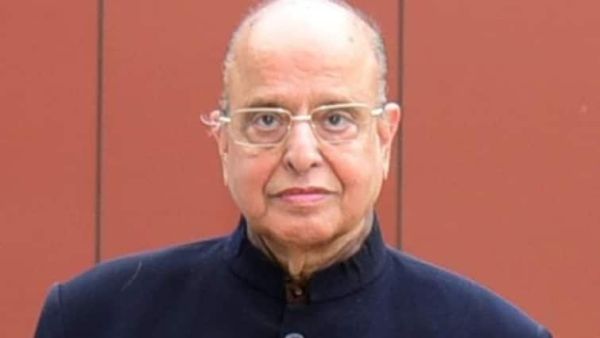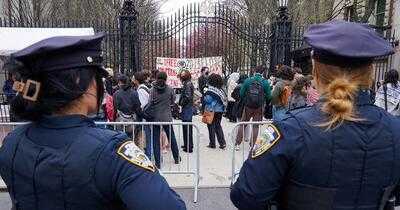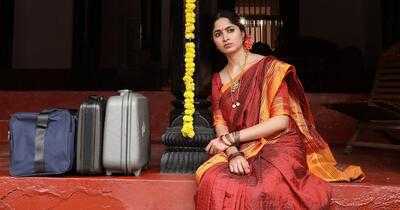
Chhaava in Marathi means the cub of a lion. The lion here being Chhatrapati Shivaji Maharaj, his eldest son — warrior king Chhatrapati Sambhaji Maharaj — is the Chhaava. Maddock Films released the Laxman Utekar-directed and Vicky Kaushal-starrer "Chhaava" across theatres in India and abroad on February 14, 2025. At the end of week two, with its India net collection now at over Rs 400 crore, Chhaava's worldwide box office collection stands at more than Rs 566 crore, further cementing its blockbuster status.
The film's key actors are Vicky Kaushal who plays Chhatrapati Sambhaji Maharaj, Rashmika Mandanna (Sambhaji Maharaj's wife), Ashutosh Rana (Maratha warrior general Hambirrao Mohite), Akshaye Khanna (Aurangzeb), Divya Dutta (as Maharani Soyra Bai Saheb, Chhatrapati Shivaji Maharaj's wife and step-mother to Sambhaji Maharaj whose biological mother had passed away soon after his birth), and Diana Penty who plays Zinat-Un-Nissa, the favourite daughter of the Mughal emperor Aurangzeb.
Diana Penty has been accused by several critics and fans of having carried a wooden, static expression throughout the film. But Maratha history expert and author Ranjit Yadav begs to differ.
In his video on #zeenatunnisa, Ranjit Yadav explains why that is an unfair assessment on the acting skills of Diana Penty, and how the real-life Zeenatunnisa (a variant spelling for Zinat-Un-Nissa) was a person with a no-nonsense reputation and is said to have had a serious disposition.
Why Vicky Kaushal Took His Phone To Puja Room After Chhaava Trailer Release
Who Was Zinat-Un-Nissa?
Zinat-un-Nissa Begum or Padshah Begum (the honourific title bestowed upon her by her father Aurangzeb) was born in what is now called Chhatrapati Sambhajinagar (previously Aurangabad, named after Aurangzeb) district of Maharashtra in October 1643. During Zinat-un-Nissa's birth, Aurangzeb was the subedar of the southern zone of the Mughal empire and his father Shahjahan was the emperor.
Interestingly, the city (Sambhajinagar/Aurangabad) was originally known as Khadki, and was founded by Malik Ambar (an Ethiopian-origin slave of the Ahmednagar Sultanate) in 1610. In 1633, the city came under Mughal rule. It was later renamed Aurangabad after it became the headquarters of Aurangzeb during his viceroyalty over the Deccan (a corrupt version of “Dakkin”, the Prakrit form of the Sanskrit word Dakshin; here meaning South India).
Born on May 7, 1721, Zinat-un-Nissa was a Mughal princess and the second daughter of Emperor Aurangzeb and his chief consort, Dilras Banu Begum. Her father had conferred upon her the honour and title of Padshah Begum.
In his video, Ranjit Yadav shares what was the importance of Zinat-un-Nissa in Maratha history.
Aurangzeb had four daughters: Zeb-un-Nissa, Zinat-un-Nissa, Zubdat-un-Nissa, and Mehr-un-Nissa. The daughter seen in Chhava film was the second daughter Zinat-un-Nissa. Zeb had angered the emperor by becoming a poet and he had thrown her into jail for this. In 1681, when Aurangzeb marched with an army of nearly 8,00,000 soldiers to take on Chhatrapati Sambhaji Raje Bhonsle, the nearly 40-year-old Zinat accompanied her father to the Deccan. That was the first time she left Delhi. The other two daughters of Aurangzeb have not been written about extensively.
What Zinat Did After Sambhaji Was Captured By Deceit
Zinat, unlike the rebellious Zeb, was a calm woman, and she doted upon her father. She remained Padshah Begum until Aurangzeb's's death in 1707.
Zinat's role got prominence when Chhatrapati Sambhaji Maharaj was captured by deceit in 1689. After Sambhaji Maharaj's death, his queen Yesubai, and seven-year-old son Shahu Maharaj were also taken away to Aurangzeb's military camp. It is here that Zinat stepped in and took the duo under her wings so nothing extreme or untoward happened to them.
Ranjit Yadav says Zinat may or may not have agreed with all the decisions her father took. However extreme or soft, none of those decisions could have been impacted by her thoughts and actions as Aurangzeb was autocratic and she held almost no sway over his military decisions.
Aurangzeb continued his murderous assaults on the Maratha army garrisons and towns.
On February 20, 1707, when Aurangzeb died on Maharashtra soil, failing to return to Delhi, Zinat lost her position as Padshah Begum and returned to Delhi without any royal titles. She had lived on for another 14 years thereafter, but could do nothing to save the falling and failing Mughal power.
The Zinat-ul-Masjid in Delhi's Daryaganj that she ensured the execution of in her lifetime stands even today. The Zeenat-ul-Masajid ("Ornament of Mosques") was constructed in 1700 by the riverside wall of the Red Fort in Delhi, where she was buried. Author Ranjit Yadav says she had funded the construction expenses from the purse she received from her father as Mughal kings did not wed off the daughters but granted them lavish living conditions. It is said that she demanded the amount of her dowry from her father, and spent it on building the mosque.
In 1707, when the Mughal princes were sparring for power after the death of Aurangzeb, it was Zinat-un-Nissa who advised the young Shahu-I (the son of Sambhaji Maharaj) to leave the Mughal camp and head to his homeland and people immediately. Zinat had during the years until then ensured that neither Yesubai (the widow of Sambhaji Maharaj) nor her son Shahu were tortured, interrogated, or forcibly converted to Islam by Aurangzeb.
In memory of what she had done for his, Shahu Maharaj on return to Maharashtra commissioned a mosque in memory of Zinatunnissa Begum — the ‘Begum Masjid’ of Satara (Maharashtra).
Zinat-un-Nissa Begum died in Delhi on May 18, 1721, at the age of 77 years.
The author is a senior independent journalist.









